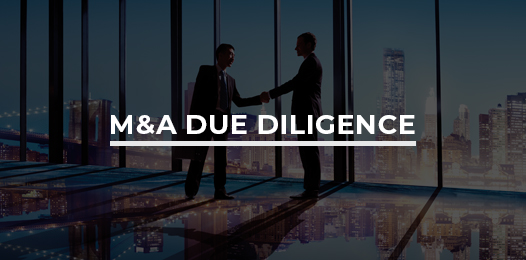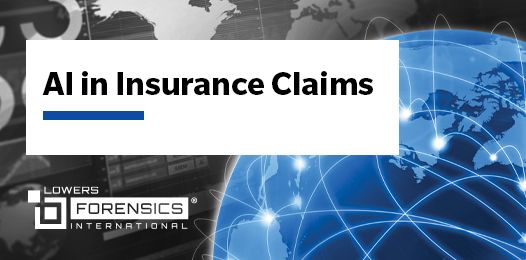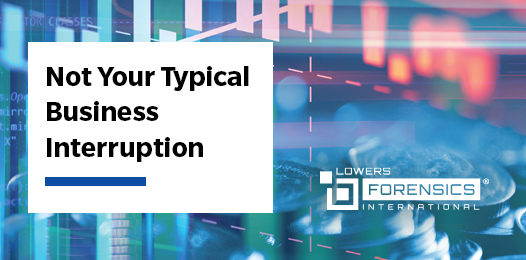The value of global merger and acquisition (M&A) deals totaled 3.9 trillion U.S. dollars in 2018. There are powerful motivations that drive companies to explore mergers and acquisitions – increasing revenue, thwarting the competition, achieving tax benefits, and creating economies of scale – to name a few. In nearly all of these scenarios, the end goal is profitability through growth and development.
Yet despite the potential gains, there are real risks associated with these deals. In fact, 60 percent of financial professionals said “overpaying for deals” was the biggest risk facing buyers in 2016, according to a survey conducted by the Financial Executives Research Foundation and the consulting firm Crowe Horwath. Forty percent of respondents said “high valuations” were making completing M&A transactions risky business.
The risks of mergers or acquisitions failing to meet their objectives run the gamut from lack of shared strategic vision to differences in organizational culture to incompatibilities in technology. It is financial risks, though, that pose the greatest immediate risk, which is why due diligence teams frequently turn to forensic accountants to conduct thorough research before sealing the deal. Here are 3 reasons why:
1. Valuating the Company
Estimating the fair economic value of the business to be acquired (or merged with) is one of the first steps in an M&A transaction. Several methods exist for establishing the value, including looking at market capitalization, liquidation value, times revenue formulas, or earnings multipliers. For this reason, valuation is both an art and a science. Companies will put their most favorable valuations forward in an effort to achieve the strongest deal, and for this reason, valuations are notoriously inflated. Case in point? The research firm Zirra found that the top 20 venture-backed unicorn company values were inflated by a median of nearly 27 percent.
Instead of taking the valuation at face value, attorneys for the acquiring company or the venture capital company that’s funding the deal, will engage the services of a forensic accounting firm to dig into the financials of the business. To ascertain whether the proposed business valuation is valid and justified, forensic accountants will calculate the value of the company’s assets, verify revenue streams, review earning statements, and assess related factors (e.g., brand position in the marketplace).
“I believe a good forensic accountant is born, not trained. They have the innate ability to know where to look to find answers, and they refine that instinct by working with other experts in the business,” says Marc Johnson, President of Lowers Forensics International.
2. Assessing Return on Investment (ROI)
Assuming the valuation is fair and defensible, forensic accountants will take a closer look at the potential for short- and long-term returns relative to the risks involved. Will this investment deliver the kind of financial results we believe it will?
As part of their analysis, they’ll consider what the overarching objective for the merger or acquisition is. Publicly traded companies, for instance, might be seeking a consistent internal rate of return for investors, whereas a strategic buyer may be looking to diversify their product line or create other synergies.
Just as there are different methods for valuating a company, there are different formulas for determining ROI. The outcome of an ROI calculation will vary depending on the figures the forensic accountant includes in earnings and expenses. The investment timeframe will also play a factor, with longer time horizon making it more challenging to accurately determine earnings, costs, or even future tax rates.
“A skilled forensic accountant understands that different industries present different risks and that will determine the focus of asset and liability areas they’ll dig into,” says Johnson.
Top Risks Associated with M&As
- Overpayment for deal
- Insufficient financial due diligence rigor
- Technology incompatibility
- Inefficient operational integrations
- Lack of strategic vision
- High valuation
- Past or present debt
- Culture clashes
3. Performing Due Diligence
Though valuation and ROI are two important dynamics informing M&As, there are a host of other financial and operational factors that can influence their ultimate success or failure. Through the process of performing due diligence, forensic accountants can shed light on these issues before the deal closes.
They’ll pour through accounts receivable to vet the aging and quality of accounts, for instance, or they’ll verify that internal audit controls are in place. To gauge how well the organization is managed, they’ll ask questions about operational procedures and take the pulse of employee morale. They’ll assess the IT infrastructure and identify likely barriers to systems integration. Bottom line: they’ll dig deep.
Johnson, who’s performed due diligence activities for dozens of companies, advises, “You wouldn’t want to retain a typical accountant for an M&A due diligence audit. Not all accountants are cut from the same cloth.”
Choose the Right Team
With millions (or even billions) of dollars on the line, companies can’t afford to cut corners in a merger or acquisition. The right due diligence team with the right experience is a must. The executives at Lowers Forensics International have decades of experience in providing forensic accounting. If you’d like to learn more about how we can assist you, contact us any time.




